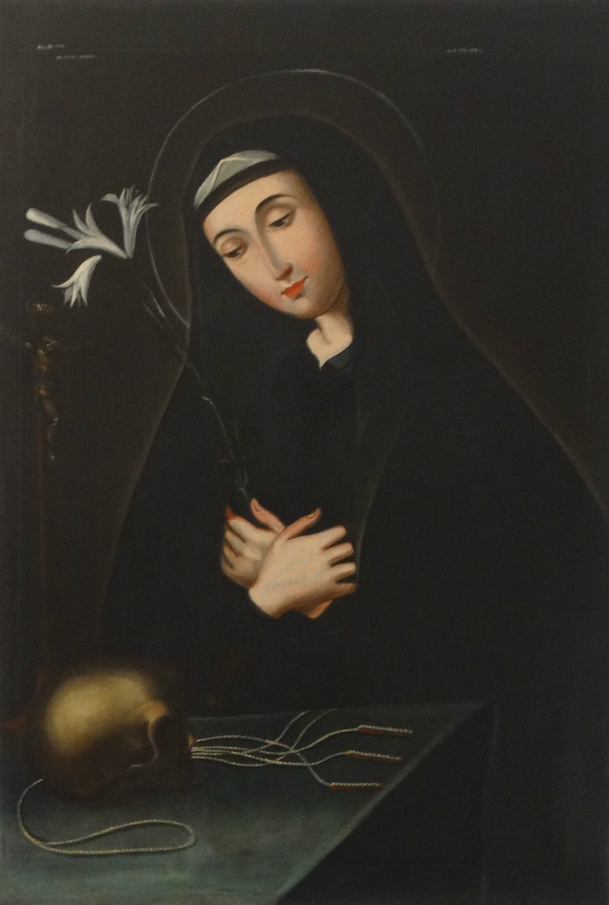A Museum with Centuries of Religious Art
 |
| Santa Mariana de Jesus, oil, 18th century |
The Museo de las Madres Conceptas de Loja is a must-see place in the heart of the city. Being part of the original monastery founded in 1597, the museum portion (about 300 years old) houses in excess of 70 paintings on religious themes, plus sculptures, liturgical vestments of the clergy, and preserves rooms illustrating the life of the inhabitants. The monastery continues to this day to serve a small cloister of nuns. Their story is pretty cool, too, but today I want to talk about the art.
 An important legacy of the museum are the works of art which are didactic in nature, and made with the original purpose of visually telling stories of the bible to convert the native people. The paintings are done in the Jesuit style or also referred to as Cuzco School (named for Cuzco, Peru, the site of South America’s first school teaching systematic religious painting to the Quechua people and mestizos).
An important legacy of the museum are the works of art which are didactic in nature, and made with the original purpose of visually telling stories of the bible to convert the native people. The paintings are done in the Jesuit style or also referred to as Cuzco School (named for Cuzco, Peru, the site of South America’s first school teaching systematic religious painting to the Quechua people and mestizos).In general, the paintings are highly decorated, remarkable for their use of earth tones in combination with lavish gold leaf. These works typically have a flattened medieval perspective, which attracts attention and is pleasing to the eye.
 |
| El Martirio de San Andrés, by Agusto Arteaga Galdeman |
Again, the museum has numerous other features besides paintings which make a visit very worthwhile, including a small chapel with an impressive altar, a courtyard garden, and displays illustrating early life in the monastery. For example, sewing was an activity that resulted in the creation of many beautiful vestments and these fill one room.
 The museum is open Mondays through Fridays and admission is only $1. Entrance is on 10 de Agosto, just east of Parque Central. There is usually a person available to give a guided tour but expect it to be delivered in Spanish. If you need an interpreter then contact me ahead of when you plan to visit so we can schedule a time that we can go together. Contact me anytime at (phone/Whatsapp) 098 674 5994, (email) lifeinloja@gmail.com, or (Facebook Messenger) m.me/lifeinlojaecuador.
The museum is open Mondays through Fridays and admission is only $1. Entrance is on 10 de Agosto, just east of Parque Central. There is usually a person available to give a guided tour but expect it to be delivered in Spanish. If you need an interpreter then contact me ahead of when you plan to visit so we can schedule a time that we can go together. Contact me anytime at (phone/Whatsapp) 098 674 5994, (email) lifeinloja@gmail.com, or (Facebook Messenger) m.me/lifeinlojaecuador.


Comments
Post a Comment